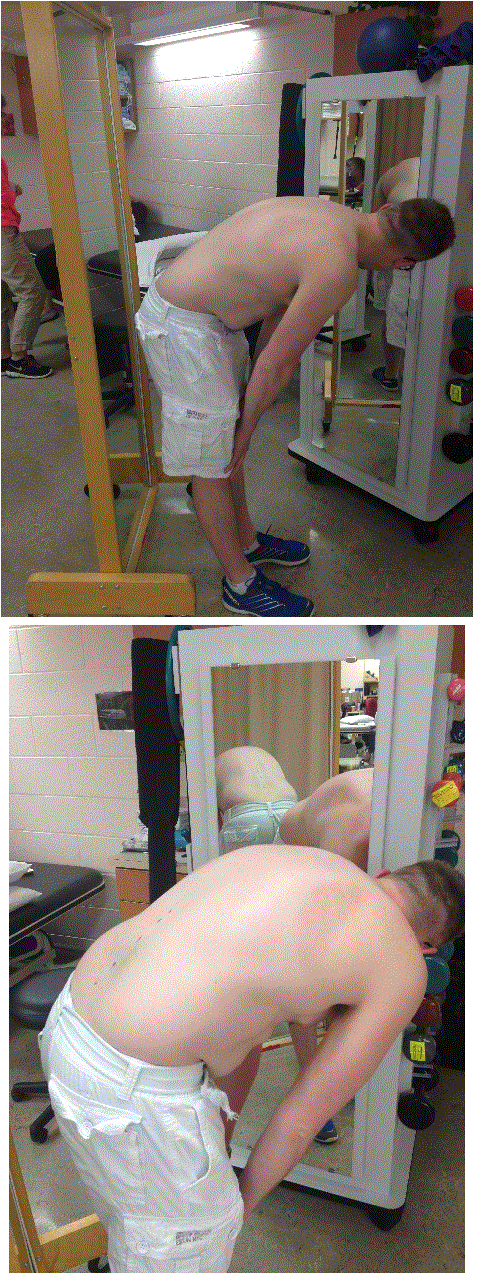Mirror Therapy for Back Pain
Reference:null
I have written about the potential benefits of mirror therapy in conditions such as CRPS but this is the first paper on the use of mirror therapy/self-visualization on individuals with chronic LBP.
All 25 individuals with LBP performed repeated lumbar spine forward bending, extension and side bending under 2 conditions.
Condition #1: The patients stood between two large mobile mirrors facing each other. The mirrors were strategically placed so that they had a clear mirror image view of their own back. Using a washable pen, their lumbar spinous processes, iliac crests and 12th ribs were marked in order to enhance their visual feedback as they move.
Condition #2: As above, but this time the mirrors were covered by a large sheet. To ensure consistency between the two conditions a metronome was used for pacing of the repeated movements and markers were used to ensure equal distances were reached under each condition.
Every patient was asked to record their current pain level prior to and immediately after performing the repeated movements.
Results: When the patients were able to visualize their own back during the repeated lumbar movements, they reported of significantly less pain and recovered significantly faster during the rest periods.
Although statistically significant the average pain reduction was only 1 point (9mm) on the VAS score, and the average recovery time was 50 seconds faster for the mirror visual feedback group.
Why? Since the exact explanation for the pain reduction using mirror therapy is still unknown, a number of theories have been proposed. One hypothesis is that self viewing may simply reduce the fear and anxiety related to movement, especially in catastrophizing individuals who habitually perceive they back as being “bad”, “out”, “crooked”, “arthritic” or “damaged”.
Once their vision and brain perceive that their chronically painful spine actually looks normal and moves in a normal fashion, the ingrained maladaptive beliefs about structural problems with their back may decrease. This normal visual feedback may help reduce the threat value of moving the lumbar spine and hence reduce pain perception in the short and long-term.
Personal Comment: Although this was a great eye opening study I am still not sure if a drop of 1 point in pain score is worth the trouble of clinically using mirrors. I have not yet attempted mirror therapy for my back patients but perhaps if a patient repeatedly performed mirror therapy several times a day, the benefits may be more clinically relevant.
Posted on: June 12, 2014
Categories: Lumbar Spine , Fascinating Pain Studies


